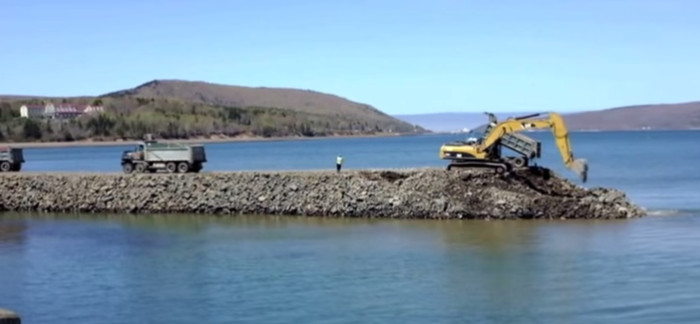Breakwaters are a form of erosion control that you can usually find running parallel to any shoreline that experiences continuous waves. The breakwater takes the full force of every wave, allowing even fragile shores to stay more intact over a longer period of time. You can find two types of breakwaters at most locations: some are floating, while some are fixed structures. They are usually built to help protect homes or beaches. As with any structure like this, there are some pros and cons of breakwaters that must be evaluated before one is installed.
What Are the Pros of Breakwaters?
They Can Control Most Average Waves
Although breakwaters aren’t in a stop waves that are high because of storms, they will prevent most average waves striking the shore at their full force. A well-designed floating breakwater can stop waves that are up to 6 1/2 feet high, while their fixed companions can stop waves up to 10 feet high depending on their design and the local environment.
They Don’t Interfere With Water Flow
Unlike other water control features, like a dam, breakwaters don’t interfere with the local water flows. This means the wildlife in the area still have access to their habitat because the water flow has not been modified. Even the movement of sediment continues to be a natural process, although fixed breakwaters can change the sediment flow from time to time.
They Create A Natural Harbor
Even if fast-moving waves or large waves can’t be completely stopped by the breakwaters that have been installed, they will still create a natural harbor that is safer than the open water. If damage does occur to breakwaters, the maintenance replace them is very affordable and allows a community to have an ongoing benefit.
What Are the Cons of Breakwaters?
They Won’t Provide Emergency Protection
Breakwaters are all about erosion control. These structures will not provide any emergency protection to a beach or a home that is caught in the line of the storm. It might reduce the severity of storm waves that are coming in, but it will not save structures that have been the target of fast-moving, high storm waves.
They Can Be Expensive To Build
Many communities opt for floating breakwaters because they are the cheapest option. Even so, can cost millions of dollars and require expensive expertise to install a new breakwater because a complete understanding of local wave dynamics must be included in the design. Many breakwaters are also designed to be permanent, which means there is a long-term modification to a shoreline.
They May Present The Long-Term Ecological Hazard
As much as we know about science today, any scientist will readily admit that we are far from knowing everything that this world has to offer. Installing breakwaters may present long-term ecological hazards that we don’t know about through our desire to control the problem of erosion that we see today.
Breakwaters might not always look pretty, but they generally get the job done. By weighing the advantages and disadvantages of installing the structure along the shoreline, a community can decide if saving a beach and the homes on it with this structure is worth the investment.




